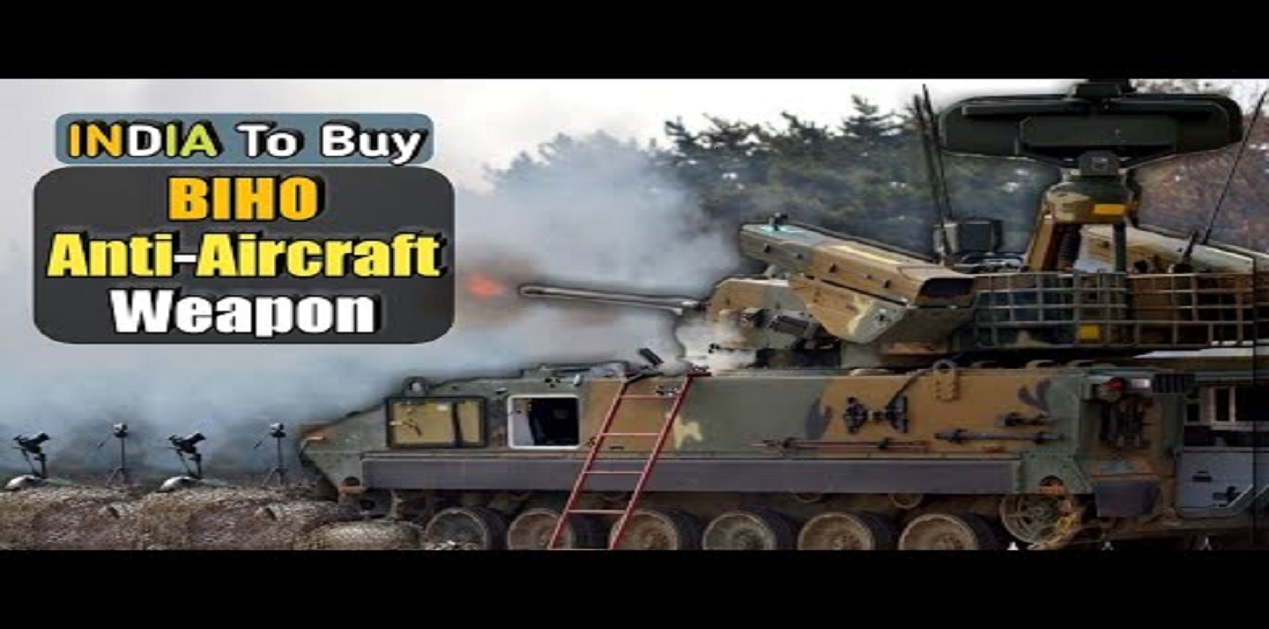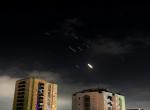The Event
On 10 May 2019, it was reported in the media that India had finally selected the South Korean made Hanwha K 30 Biho (Flying Tiger), a highly mobile short range Ground Based Air Defence (GBAD) weapon system, to protect its forward manoeuvre units1. This article analyses the above development bringing out the criticality of the requirement and how it stands addressed to some extent with the reported deal on K 30. The article also presents a bigger picture by listing out certain imperatives that need to addressed in the GBAD domain as a matter of operational expediency.
Place of K 30
Requirement for a typical GBAD weapon system, like K 30 or any other, cannot be seen in isolation. They are a part of one big picture. This picture is based on the fact that all air defences, be it on ground, air, sea or sub-surface, exist for the sole purpose of countering the air threat from one's potential adversaries. That air threat has undergone a total transformation over time. A brief look at the said transformational journey is essential in appreciating the place of K 30 in the overall GBAD matrix.
Air Threat
The term 'air threat' essentially implies the cumulative potential danger which our adversary holds, as his capability to cause damage and destruction to our vulnerabilities through the use of his aerial threat vehicles and munitions. This danger is basically assessed in two dimensions. First is the qualitative dimension which includes the lethality, severity and technological advancement of the adversary's air threat vehicles while the second, is the quantitative dimension, that relates to the numbers of threat vehicles which are likely to be put together by the adversary in delivering his air threat punch.
There was a time around late sixties, when the air threat was mainly prosecuted by the binary power of aircrafts and helicopters capable of operation only during day/fair weather and using such arsenal as guns, unguided bombs and rockets. On the other side, our vulnerabilities requiring protection from enemy air were also very limited. These vulnerabilities are referred to as the Vulnerable Areas/Points or VAs/VPs for short. Most of these VAs/VPs required day time protection from the above said threat vehicles. Air defence battles were largely limited to visual domain. The trend those days was to deploy multiple rings of terminal air defence guns around the vulnerabilities to be protected. This pattern of deployment was called 'point defence' deployment. When the gun density increased in multiple rings, the deployments looked like a 'carpet layout of guns' and was called as such.
As time rolled, two dimensions of the air threat became increasingly visible. First was the multiplicity in the air threat vehicles and the second was the exponential rise in the range and reach envelop of the aerial weapons. For the former, the erstwhile binary pair of aircrafts and helicopters were joined by Unmanned Aerial Systems (UAS) besides the air-to-surface missiles, cruise missiles and anti-radiation missiles to take on radiating sources like radars etc. With passage of time, newer dimensions of the threat appeared such as lethal attack helicopters capable of flying in the 'nap of the earth' thus evading all radar detection, soft kill weapons, electronic warfare weapons and a slew of precision guided munitions or PGMs which could be launched with a needle sharp accuracy by threat vehicles standing off scores of kilometres in safe zones away from the kill zone of GBAD weapons.
Around 2000 or thereabouts, a newer dimension of air threat emerged that was called stealth. This enabled the threat vehicles to drastically reduce their electronic foot print and thus remain invisible to the defender's radar systems. Coupled with stealth, the technology enabled the modern threat vehicles to use state-of-the-art avionics and armaments threaded in real time networked communications. This revamped the air threat many notches northwards. All this and more transformed today's multi-role air superiority fighters into highly formidable and lethal machines capable of all-weather/all-terrain/24x7 operations with longer ranges, deep strikes, precision kill and standoff capabilities. In short, the sting of severity and lethality in the air threat vehicles got a paradigm upward shift over time.
Gear-up to Counter Air Threat
Since air threat and air defence are eternally tied in a cause-effect relationship, the defenders also continuously revamped their arsenal and their methods of deployments keeping in pace with the upward journey of the air threat. Air defence warriors realised early enough that in order to counter the type of air threat as was evolving, their arsenal will have to be all-weather all-terrain capable and enabled for a 24x7 operation cycle. They realised that the point defences on individual VAs/ VPs by terminal guns alone will have to gave way to combined air defences on land sea and air integrated on a theatre grid. Such defences must be capable of delivering successive and seamless punishment to air threat vehicles shifting from weapon-to-weapon and covering the entire spectrum of heights and distances without gap. This punishment must commence as soon as the threat vehicles are detected at maximum possible ranges and must continue seamlessly right up to the end game at the terminal end of deployment.
Such an amalgamation of tri-service air defence capability is referred to as Integrated Air defence System or IADS for short.
Layered and Tiered Defence
The land component of the IADS is composed of guns and missiles which are deployed in overlapping layers so as to produce a theatre grid capable of providing air defence cover to a large number of VAs/ VPs that may lie in that theatre. Such a pattern of deployment is called the layered and tiered defence. The innermost layer of this defence is provided by air defence guns and man-portable missiles or MANPADS covering a range bracket of 5-10 km. This is superimposed by successive layers of defences provided by Short range ( 20-30 km) Medium Range (up to 100 km) and Long Range (beyond 100 km) missiles. All these weapons taken together constitute an integrated family that is inescapably required to counter the contemporary air threat.
IADS for Mechanised Forces
Besides the above layered and tiered defence, there is one more category of GBAD weapons that forms a part of IADS. It is called the Air Defence Self Propelled or ADSP weapons. Basically, besides the lethal power of guns/missiles on board, ADSP weapons are capable of moving on their own traction. That is the reason these are called 'self-propelled' weapons.
ADSP weapons are typically meant to provide air defence cover to highly mobile and mechanised formations operating in the battlefield. These weapons could either feature only guns or guns and missiles. Mounted on high mobility chassis, ADSP weapons can keep pace with manoeuvre forces, can search and track targets while on move and can deliver fire immediately on halt. These could be short range (5-10 km) ADSP systems composed of guns and MANPADs or stand alone Quick Reaction Missiles (QRSAM) covering the range bracket of 20-30 km. That is about the range envelop in which the mechanised forces are most vulnerable in the immediate battlefield space in front of them.
K 30 Biho is an ADSP system which while forming the part of the integrated GBAD weapon family deployed in layered and tiered defence will be dedicated for providing air defence cover to mobile and mechanised formations in the TBA. This explains the place of K 30 in the overall matrix of GBAD weapons forming a component of the IADS.
Role of K 30
Mobile and mechanised forces in the battlefield are composed of tanks, infantry combat vehicles, self propelled artillery guns and howitzers with other components of supporting arms. These operate as combined all arms entities configured as combat teams, combat groups or combat commands representing a force level from a regimental sized fire unit to a divisional sized force. Such forces while operating in the battlefield are particularly vulnerable to two specific types of air threats. First of these are the attack helicopters and the second is low flying multirole aircrafts.
Attack helicopters are highly versatile air threat vehicles armed to the teeth with guided rockets, missiles and precision guided munitions (PGM) and are capable of all-terrain all-weather operation. Besides a strong electronic warfare muscle and a strong stealth signature, these remain almost undetectable by flying almost hugging the earth's curvature thus remaining below the radar horizon. This greatly enhances their surprise and unpredictability factor wherein these vehicles can suddenly pop up from a totally unexpected direction from behind an obstacle and deliver lethal fire claiming disproportionate casualties. Another main threat to the mobile and mechanised forces is from the state-of-the-art aircrafts equipped with all-weather, all terrain capability and carrying lethal precision guided munitions as explained in the air threat section.
Suffice to mention that our potential adversaries on our western and northern borders are fully equipped to deliver the above attack package both in terms of attack helicopters as well as, the modern air superiority and multi-role fighters (specific equipment holdings not discussed). It is the ADSP weapons which counter the above threat to the mechanised forces. These could be guns systems alone or guns and missile systems.
Currently there are voids both in the AD SP arsenal both in the guns and missiles category. In the gun category of AD SP, the current weapons are the ZSU 234B1 Schilka mobile gun system and the Tunguska M1 AD SP gun-missile system both of Russian origin (quantum holdings not mentioned). Schilka weapon system is early seventies vintage2 The weapon system has seen a qualitative an upgrade in 20143. Efforts to find a successor for the Tunguska weapon system have been in progress from 2007. While in this process of procurement a number of weapon systems have been evaluated, the same has not resulted in a successful induction. In this light, the current induction of K 30 which is a highly capable weapon system in providing mobile air defence cover to mechanised forces will be a big fillip in addressing the current voids.
K 30 in IBG concept
It was reported in the media on 20 Jun 2019 that the Indian Army has decided to establish three new battle formations along the border with Pakistan by Oct 2019. These formations will be called the Integrated Battle Groups or IBGs. The first few of these IBGs will be raised along the western border, and then near simultaneously the raisings will start on the China border too.4 Reportedly in Feb 2019, two types of IBGs have been tested, one for the offensive role which during hostilities will involve cross border operations and the other for the defensive posture to withstand the enemy onslaught5.
IBGs, especially the one for the offensive role will be built around the manoeuvre forces required to deliver a quick lethal punch to the enemy. Besides tanks, and mechanised infantry, it will have elements self propelled artillery, self propelled air defence weapons besides a logistic chain with matching mobility. K 30 type of ADSP weapon system will prove to be ideal in provided intimate mobile air defence cover to our mechanised elements which will be highly vulnerable to the enemy's air attacks.
Combat Virtues of K 30
Now a word on the combat virtues of K 30. There are four main features that set this weapon apart. Firstly, its twin 30 mm cannons produce a very high rate of fire of 1200 rounds per min creating a high deterrent effect besides a high kill probability for the type of threat envisaged for the mobile and mechanised forces. Secondly, its X Band (8-12 GHZ) TPS 830 K Surveillance and Fire control radar has been especially optimised for detecting low level threat, of the type expected on the mechanised forces. It can effectively detect stealthy targets. Its range of 17 km is considered adequate for activating quick reaction weapon systems of the ADSP category to take on the incoming targets. The state-of-the-art radar techniques like pulse compression, frequency agility, adaptable moving target indicator and anti chaff measures further increase the effectives and survivability of this radar in hostile electronic warfare environment.
The weapon's Electro Optical Tracking System, complete with its panoramic periscope, forward looking infra red, laser range finder, thermal sight, TV camera and a digital fire control system provide an option to the operator to track and engage the targets even if the main radar of the weapon system is jammed or made inoperative by enemy action. This is a very significant capability.
The onboard Shingyung Chiron missile provides the all important gun-missile mix type of air defence cover at the terminal end. Such missiles are particularly suitable to take out unpredicted/opportunity targets suddenly appearing from nowhere.
Related Issues
Besides the weapon system, the deal also is a pointer to the growing relations between India and South Korea under the Act East Policy. In that after the first ever successful deal on K9 Vajra 155mm/52 calibre self propelled howitzer, the next to follow through is K 30 Biho. On the flip side, inducting weapons of totally new lineage than the all prevalent Russian line (constituting about 76% of all GBAD inventory) will bring its own challenges of inter-operability, maintainability, logistics and spare support issues where a new line will have to be opened.
While the above issues are realistic, the inescapable requirement of providing short range mobile air defence cover to the mechanised forces is realistic too. As enumerated above, such weapons will become particularly relevant in the IBG scenario that is taking shape steadily. To that end the induction of K -30 could not have come more early and more timely. It is a high-ticket deal involving 104 K 30ADSP systems, 97 ammunition carriers, 39 Command Post vehicles, all valued at 2.6 bn USD.
Some Imperatives
As explained earlier, the layered and tired defences of the IADS will only become effective if the various components constituting the said integrated family of GBAD weapons are complete in their quantum and quality. To achieve this, the following imperatives need to be addressed:-
- Even if the mainframe air defence towed guns (L 70 and ZU 23-2) are being put through an upgrade, these have their own life and limitations. The inescapable need is to find a suitable successor for these guns as early as possible cannot be overemphasised.
- The ongoing induction process for the Very Short Range Air defence System (VSHORADs) needs to be expedited and the weapons inducted to provide the all important gun-missile mix at the terminal end of deployments, as explained above.
- The Akash production line needs to be scaled up to meet the voids in the short range missile category of the layered and tired defence. It is a good news that the new generation of the weapon system called Akash- 1S has been successfully test evaluated on 28 May 20196.
- The DRDO- Bharat Electronics Limited (BEL) must come good on the indigenous QRSAM ( QRSAM I) for the mechanised forces. The weapon has been reportedly test fired on 04 Jun 20197. The same needs to be inducted in the mechanised forces at an early date.
- The ongoing procurement case (DRDO- IAI Israel Joint venture) for MRSAM for the three Services needs to be expedited. It was reported in May 2019 that the Navy has carried out the test firing of its component of MRSAM. The weapon system is critically awaited in the land forces to complete the layered and tired defence structure of the IADS.
With K 30 leading the way, it is hoped that the other imperatives will also be addressed in due course.
References:
- "Hanwha K -30 Biho mobile air defence system for Indian Army," at www.armyrecognition .com. accessed 05 Jul 2019.
- "ZSU 23-4Shilka" at www.m.wikipedia.org. Accessed on 05 Jul 2019.
- "Indian Amy receives first upgraded Schilka air defence system from BEL," at www. army-trechnology.com. Accessed on 06 Jul 2019.
- "Army to raise new battle formations along Pakistan border by October," at www.economictimes.indiatimes.com. Accessed on 07 Jul 2019.
- "Integrated Battle groups expected to be game changers for Indian A..," at www. firstpost.com. Accessed on 07 Jul 2019.
- India Missile: DRDO successfully test fires new version of akash air defence missile," at www. economictimes.indiatimes.com. Accessed on 07 Jul 2019.
- 'LiveFist- The test of DRDO-BEL Quick Reaction Surface to Air Missile ( QRSAM)..,"at www.m.facebook.com. Accessed on 07 Jul 2019.
Image Source: https://i.ytimg.com/vi/q6MuCwv8pAk/hqdefault.jpg










Very well written article sir. I appreciate.
Post new comment